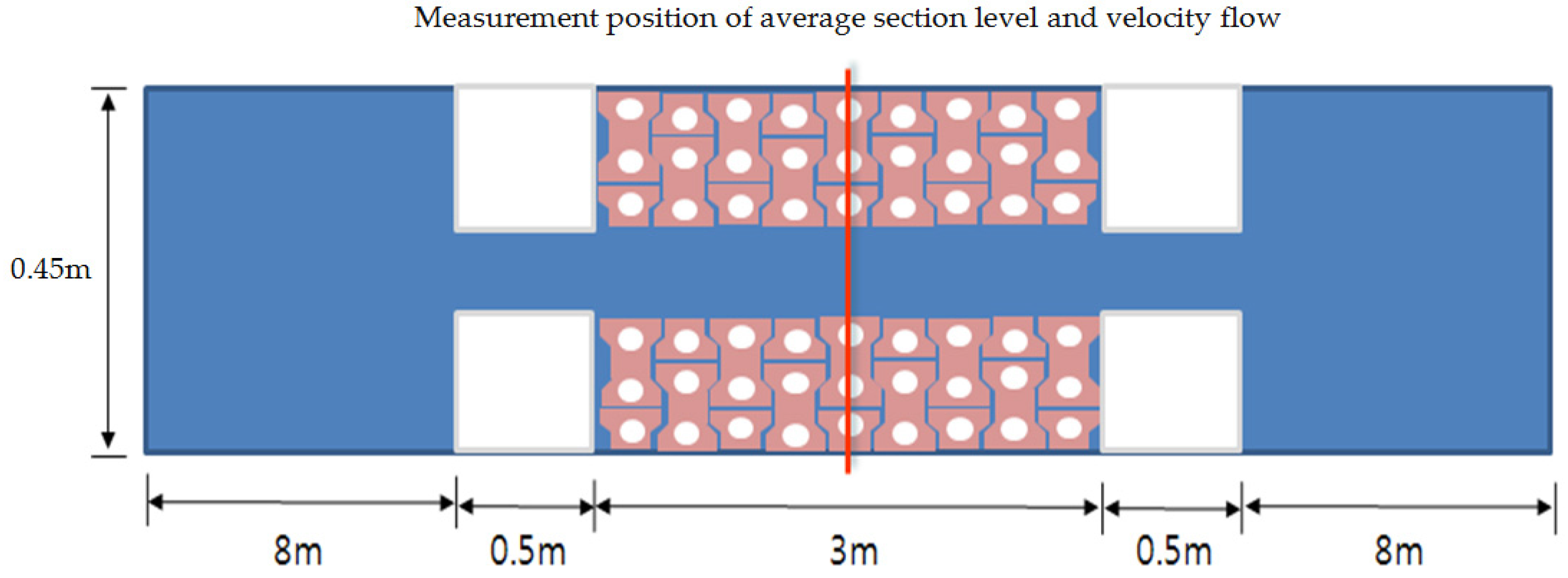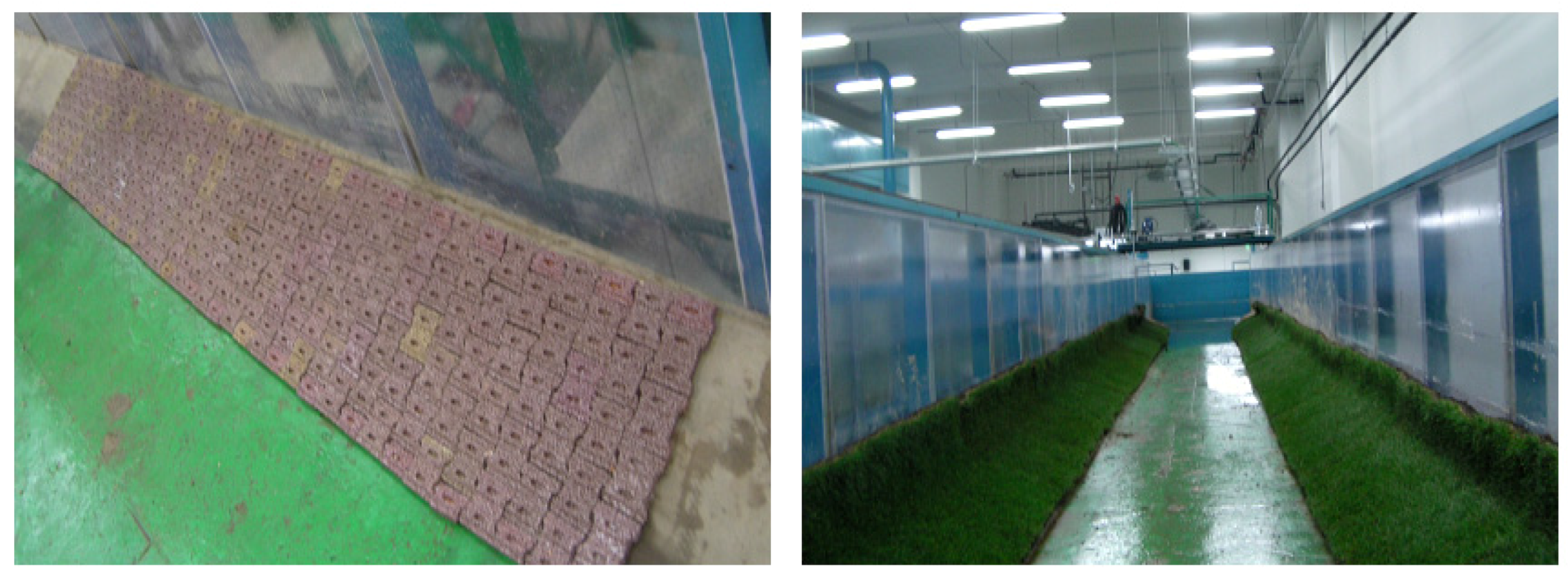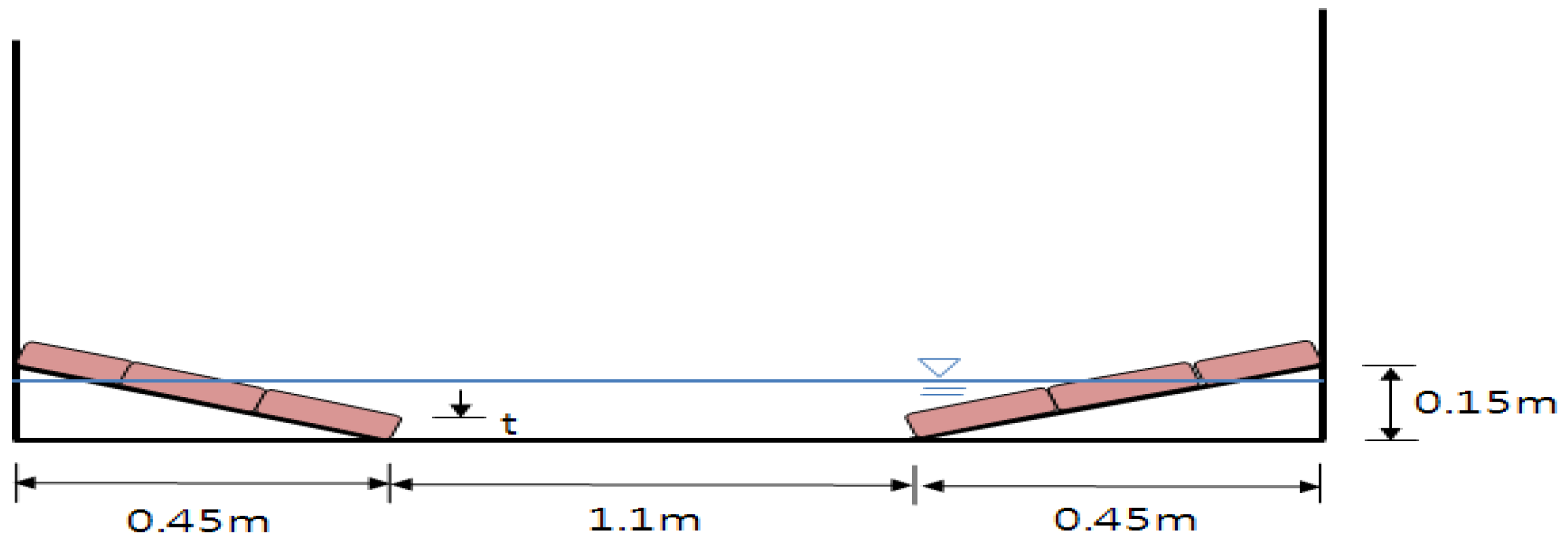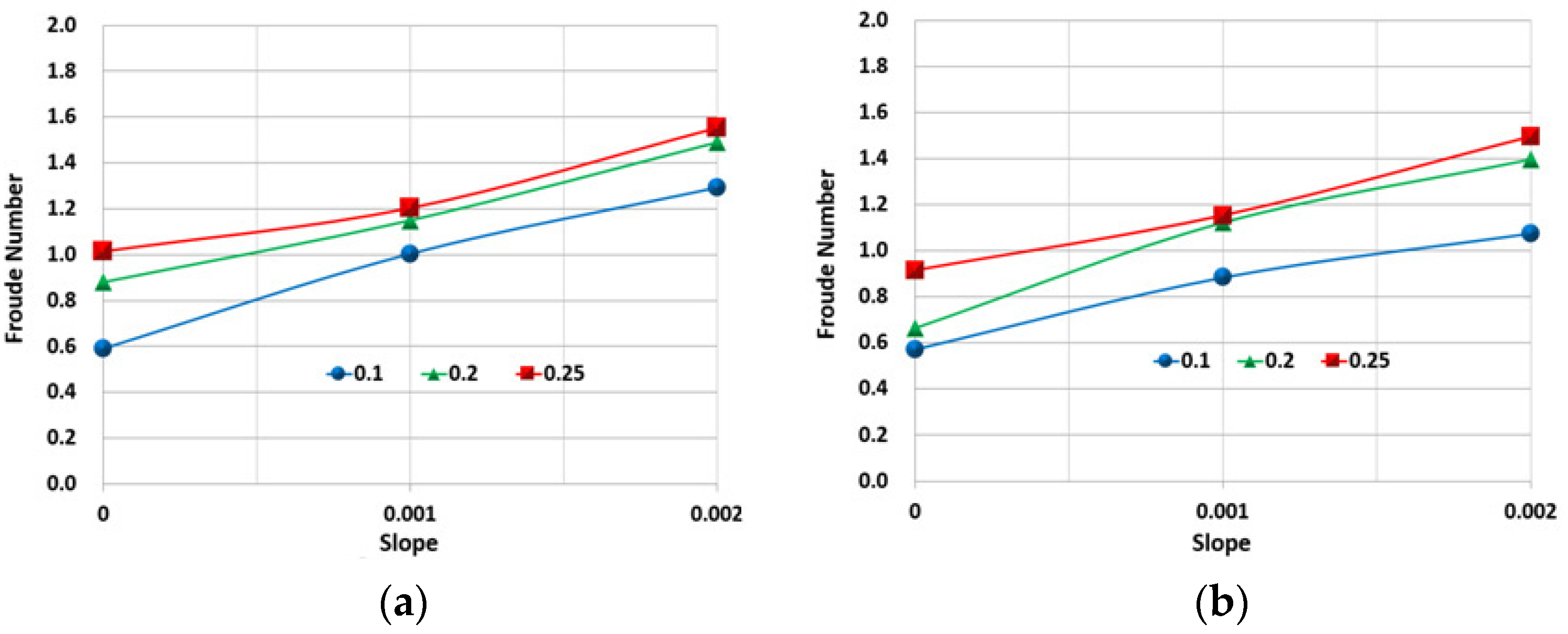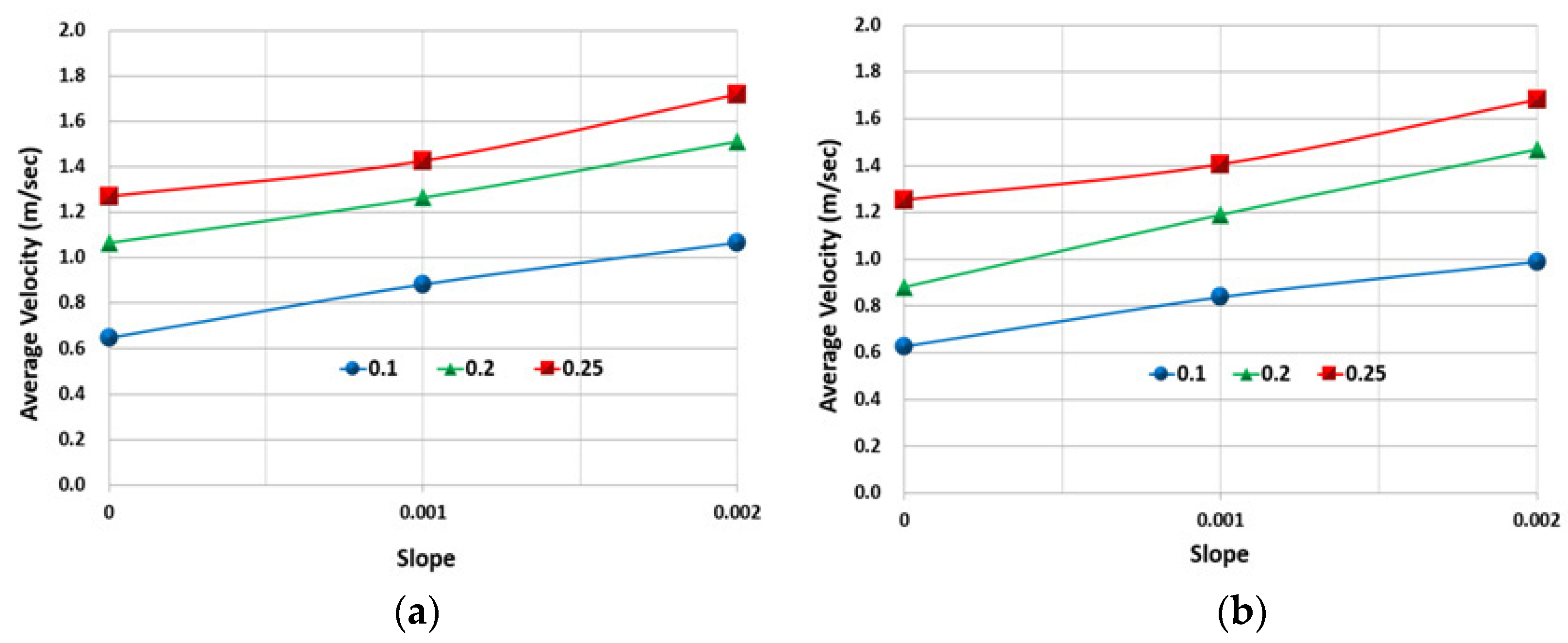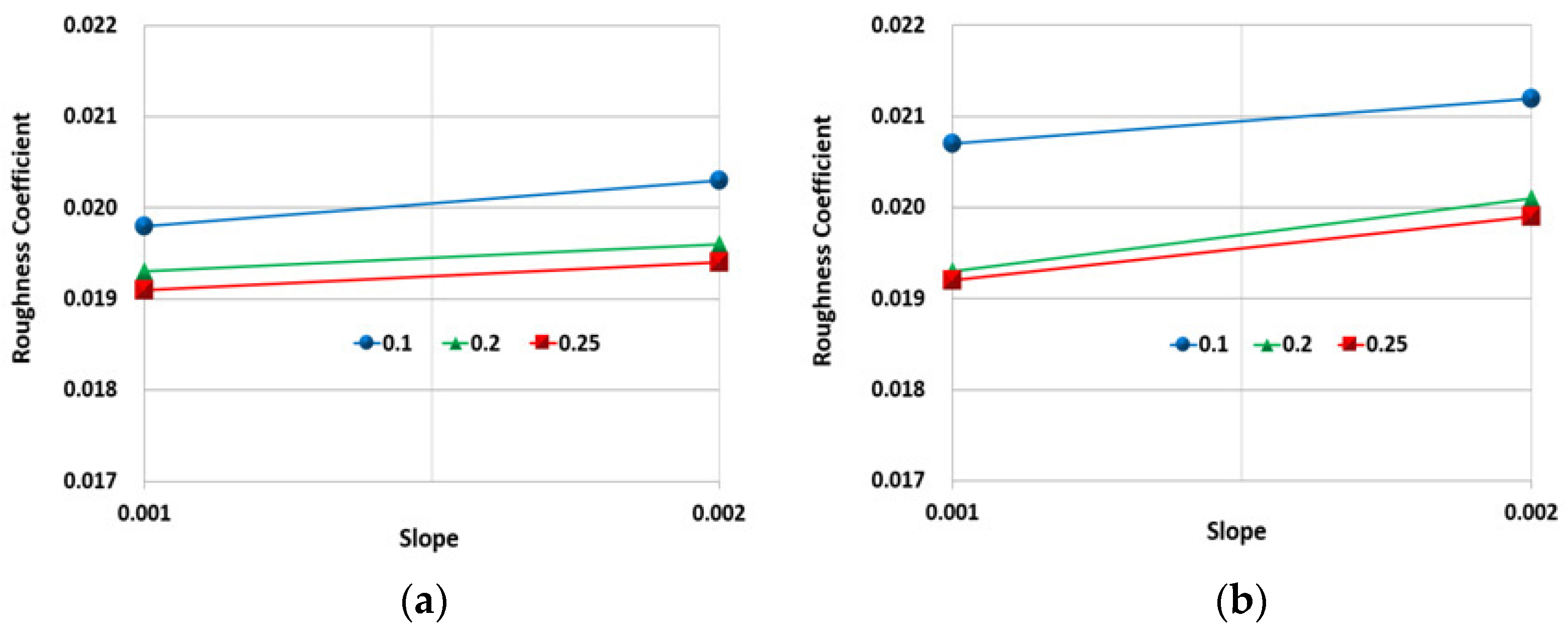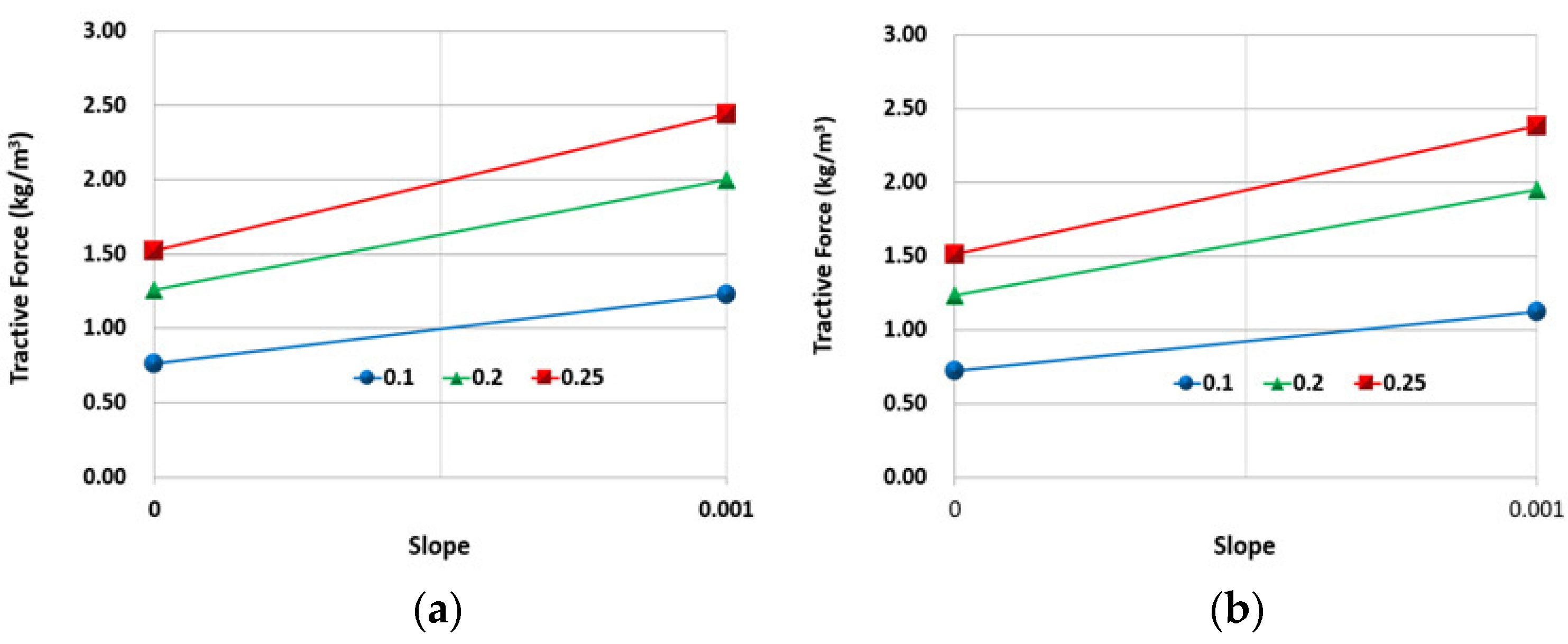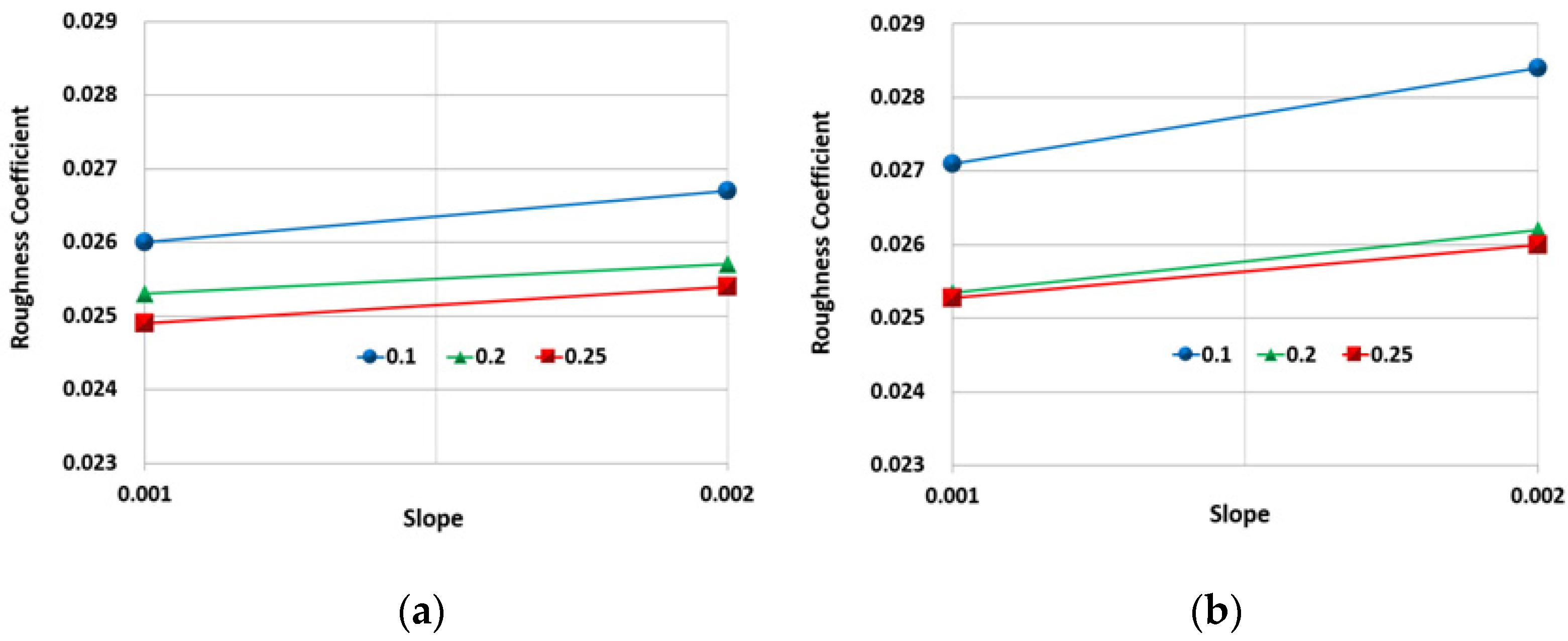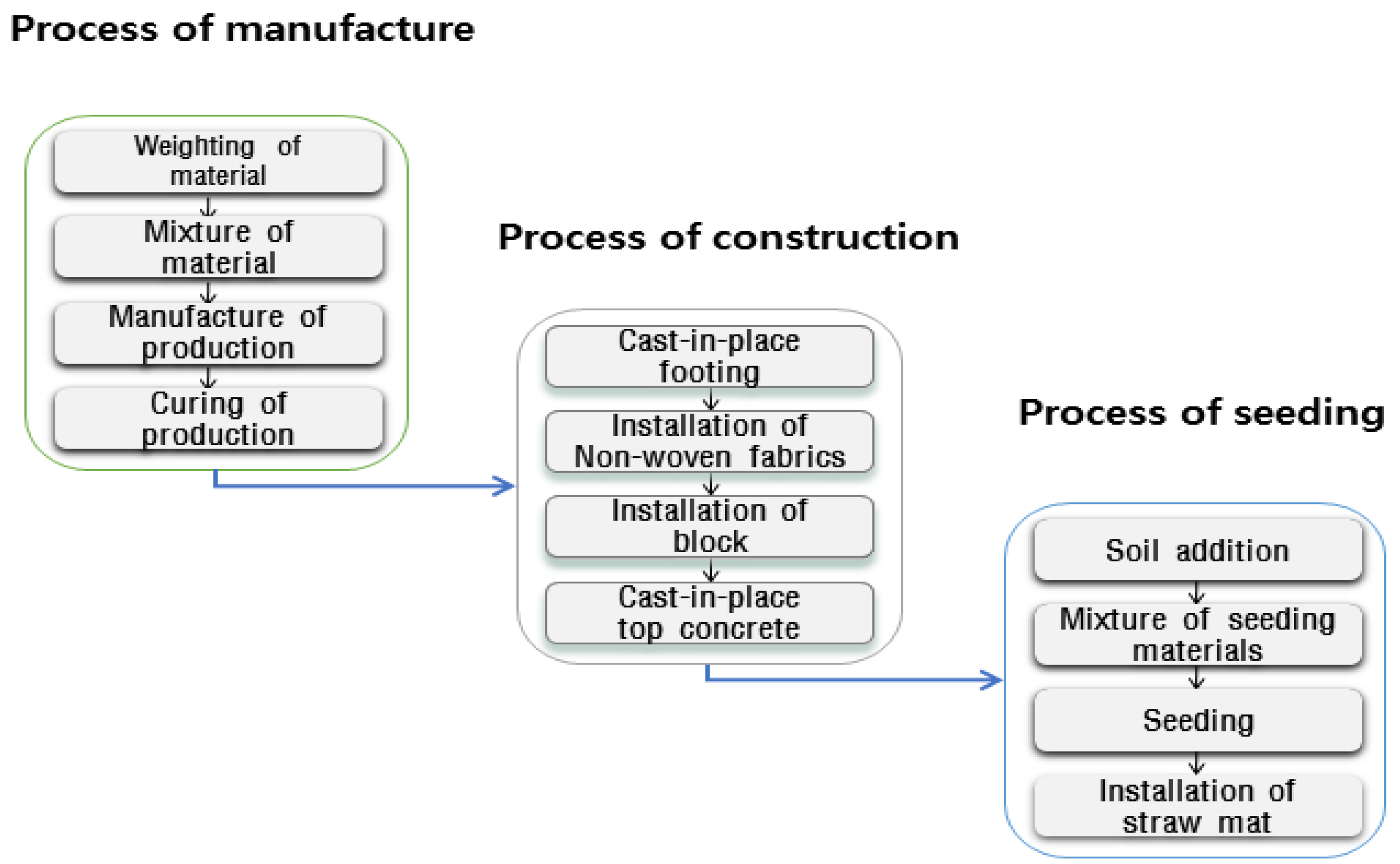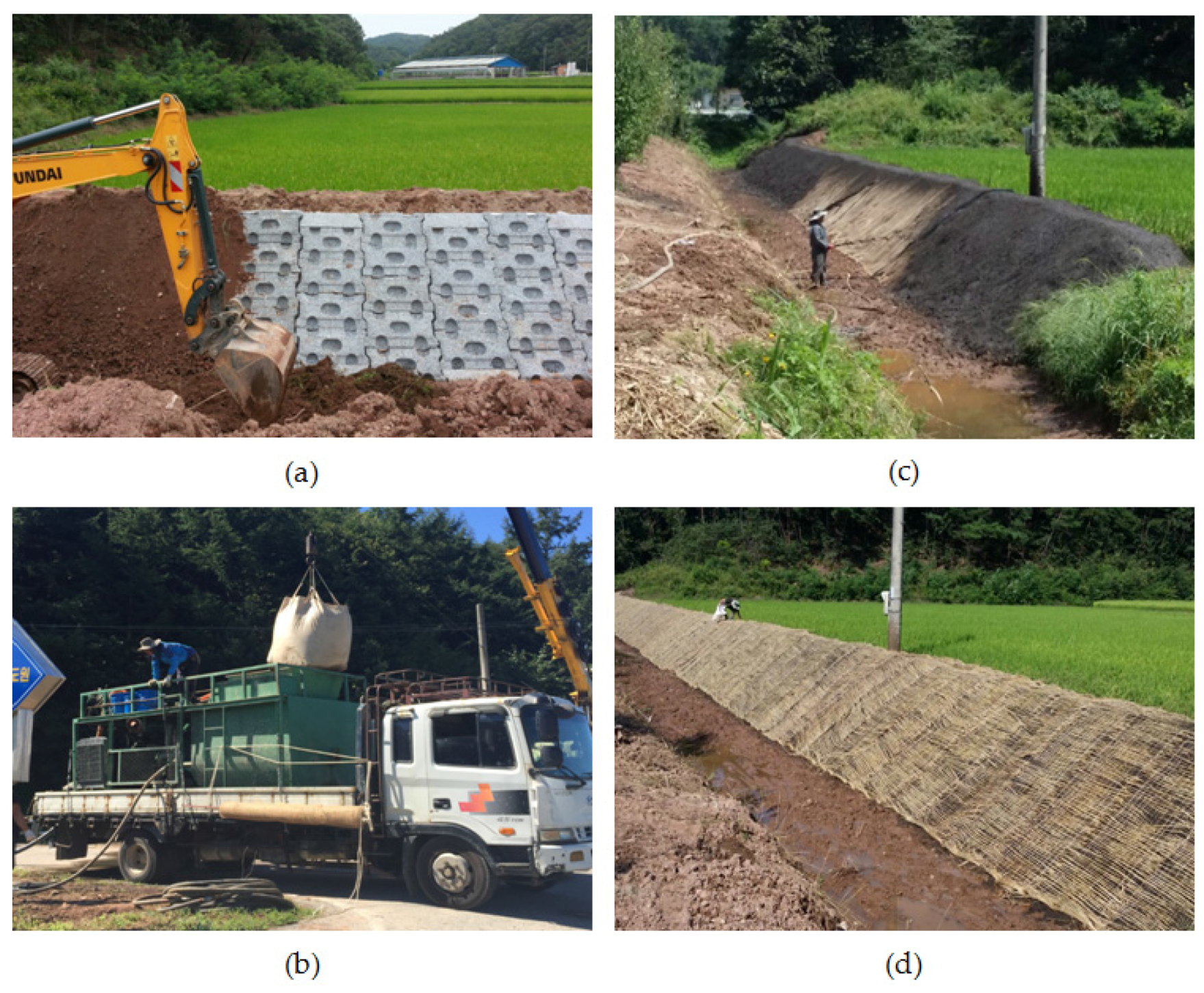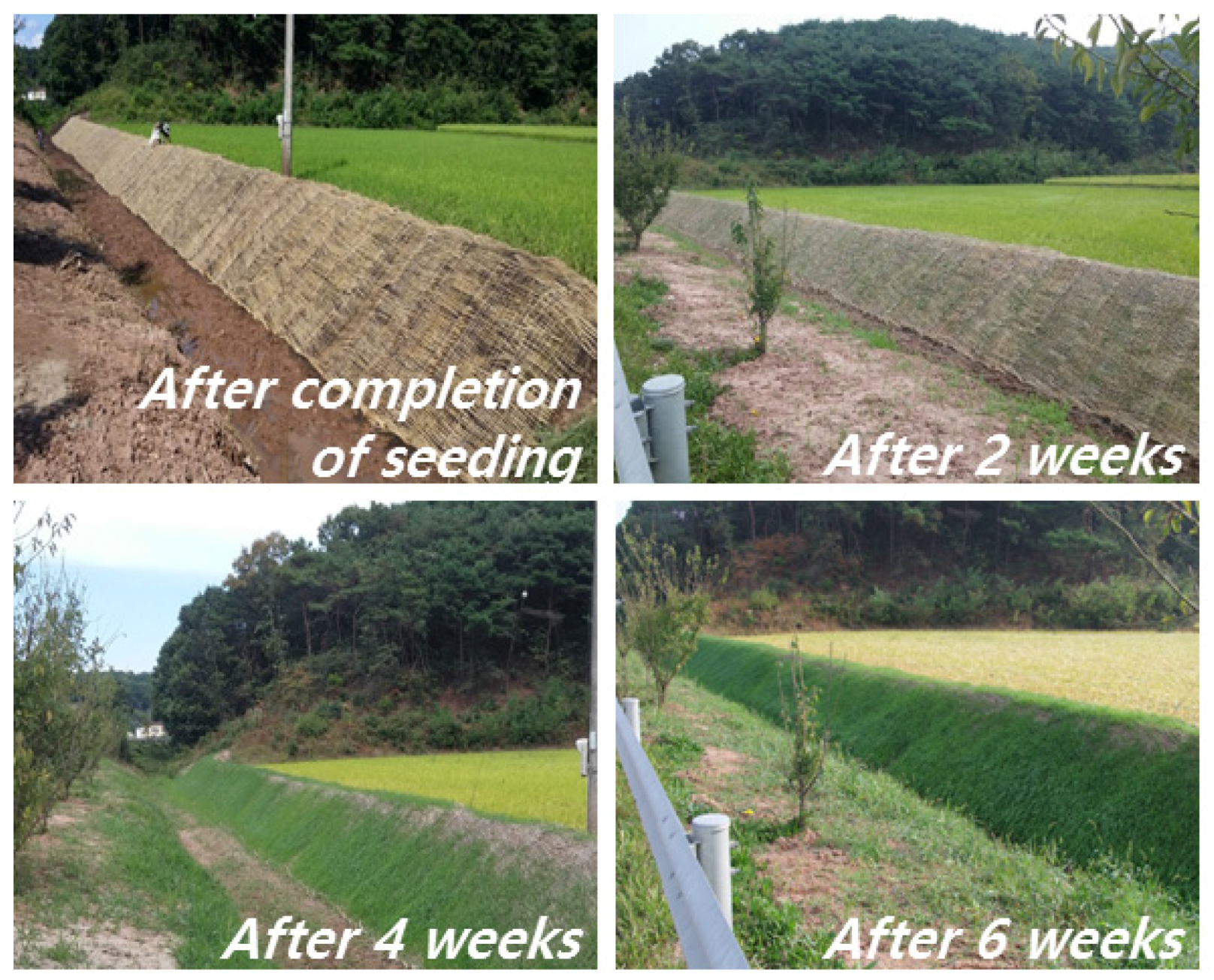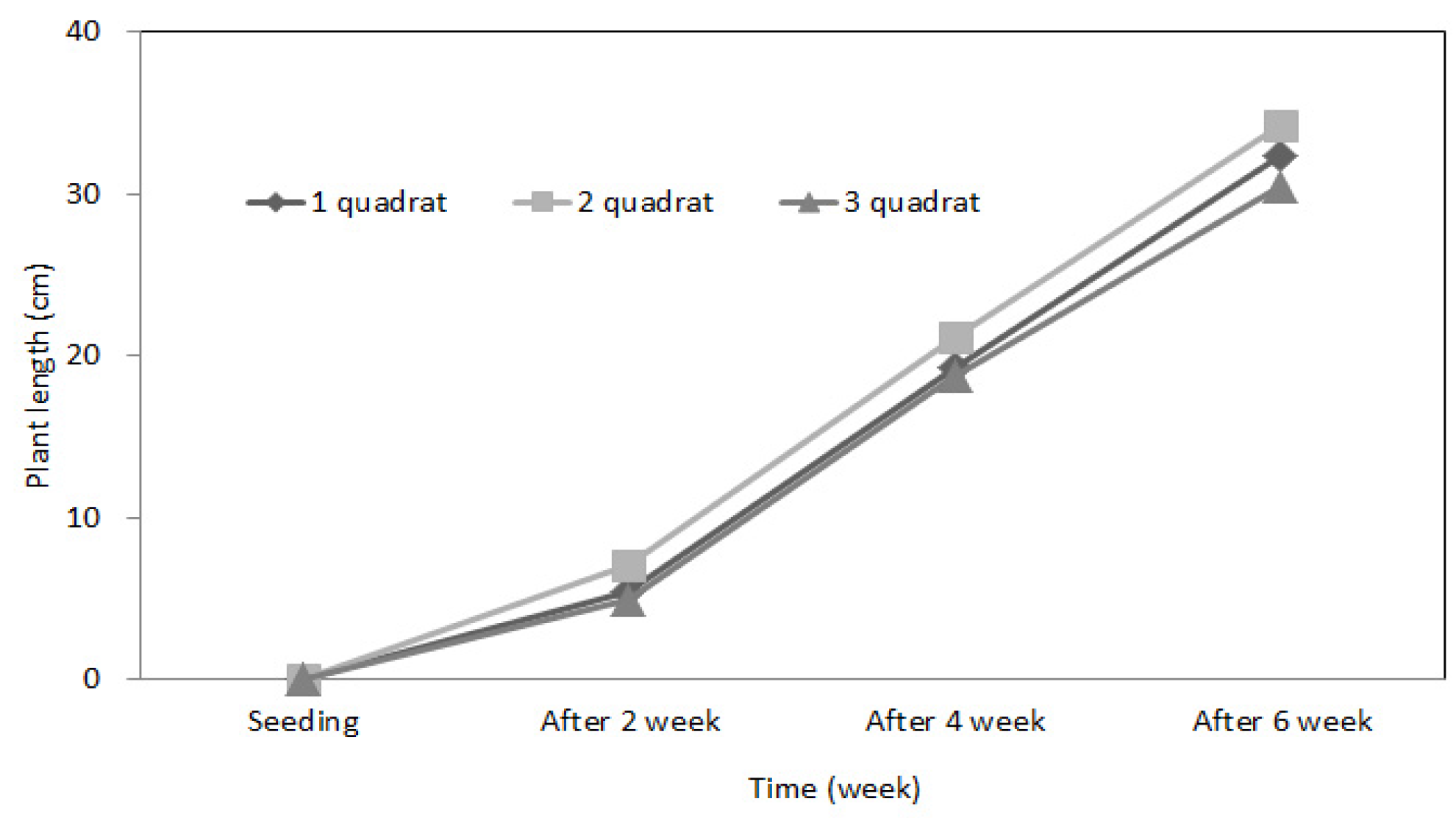Numerous studies of concretes have been reported for eco-restoration applications. Among these, porous vegetation concrete is of particular interest and has found practical applications as an eco-restoration material [
1,
2,
3,
4,
5,
6,
7,
8]. Porous vegetation concrete can be used as a river revetment. Plants can grow within the porous concrete because water, air and plant roots can freely pass through its continuous pores. Porous vegetation concrete can be completely covered by vegetation and it provides space for bio-reproduction [
9,
10,
11,
12,
13,
14]. Furthermore, by promoting the accumulation of sand, it can help regenerate nature [
15]. Plants cannot generally grow on concrete because it does not provide space for rooting and sprouting, it has low water permeability and retentivity, and it provides no nutrients [
2,
3,
4,
5,
6,
7,
8,
9,
10]. On the other hand, the void ratio of vegetation concrete allows plants to grow within it: filling of the pores with water and nutrients promotes plant growth [
11,
12,
13,
14]. A thin coating of soil on the surface of porous concrete can provide plants with sprouting space and prevents the evaporation of water, and serves as the initial source of fertilizer after sprouting. Porous vegetation concrete is overlaid with a thin layer of surface soil [
11,
12,
13,
14,
15]. The constitutional requirements for vegetation concrete are an ability to allow plants to grow within the concrete and sufficient mechanical properties to act as a concrete frame [
11,
12,
13]. Additionally, for plant growth, the four conditions of sunlight, space for growth, air and soil are required [
15]. The soil should have sufficient water retentivity and permeability, and should contain the necessary water and nutrients. Porous vegetation concrete is usually made by reducing the volume of small aggregates conventionally used in ordinary concrete, which increases the number of pores. The unit amount of cement is usually 300–400 kg/m
3 and the optimum water/cement ratio is 30%–40% [
11,
12,
13]. If the water/cement ratio is higher than this, the cement paste becomes too fluid and flows away; too low a ratio makes it difficult to pack in a mold. The optimum mixing ratio for porous concrete is established using indoor testing [
11,
12,
13]. The characteristic feature of porous vegetation concrete block is the coexistence of continuous and independent pore structures [
11,
12,
13]. To date, porous vegetation concrete studies have focused on promoting the penetration of plant roots into the porous concrete and generating microbes and other small organisms in the soil by adding filler to the soil, using water-retentive materials and adding fertilizer and alkaline buffering materials [
15]. Many studies have tried to maximize recycling by using industrial byproducts [
8,
9,
10]. The bottom ash from thermoelectric power plants, which is usually discarded, was used for porous vegetation concrete. Its mechanical performance demonstrated that the void ratio and water permeability increased with increasing the mixing ratio of bottom ash. The strength of the concrete tended to decrease as the mixing ratio of the bottom ash aggregate increased. However, the strength could be improved by the addition of polymers, e.g., when coal ash was used in porous vegetation concrete for secondary products and paving materials [
3,
4,
5,
6,
7,
8,
9,
10]. Another study evaluated the engineering characteristics and vegetation features of a porous concrete block made with rice straw ash, which is an agricultural byproduct [
13]. The compressive strength and flexural rigidity were evaluated as a function of its void ratio, time to neutralization and cure [
13]. Diverse plants such as lawn, chamssari (
Lespedeza cyrtobotrya Miq.) and bisuri (Chinese bush-clover) were planted in the developed porous block to establish vegetation features [
13]. The void ratio decreased and the strength increased with increasing the mixing ratio of rice straw ash. The strength of the neutralized block was greatest after six days of curing [
13]. Concerning the vegetation on the porous vegetation concrete block, the growth rate of lawn was greater than chamssari and bisuri [
13]. While chamssari and bisuri had lower early growth rates, their long-term growth was excellent; they showed a similar growth length as that found in ordinary soil [
13]. Crushed stone has also been widely used as aggregate in concrete. However, other aggregates are now being sought because of environmental and conservation issues concerning crushed stone. Blast furnace slag aggregate is among the substitutes being considered [
16,
17]. Similar to blast furnace slag, blast furnace slag aggregate is a byproduct of the steel industry. Therefore, substitution of blast furnace slag aggregate for crushed stone would be very effective for resource recycling and for environmental protection [
16,
17]. Blast furnace slag cement is an industrial byproduct. In this study, blast furnace slag cement and blast furnace slag aggregate were used instead of natural aggregate to produce an eco-friendly porous vegetation concrete block. Hydraulic stability testing was conducted to evaluate its physical and vegetational performance in the field.




